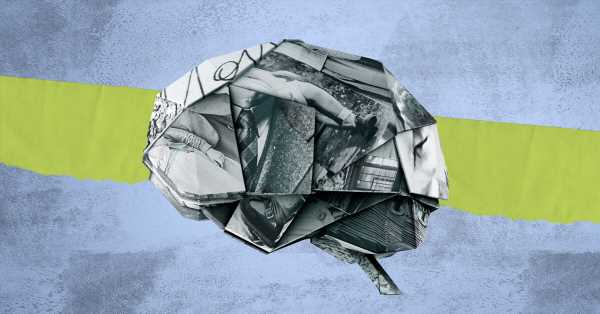
- Astrocytes play a variety of roles with neurons, but until now, scientists did not know that these cells carry electrical impulses.
- Applying new technology, Tufts University scientists recently discovered in mice that astrocytes are electrically active like neurons.
- The researchers hope that their findings may lead to treatments for traumatic brain injury, Alzheimer’s disease, and other brain disorders.
Astrocytes make up almost half of the mammalian brain cells. They are called glial cells because scientists originally thought that these starlight-shaped structures serve as “nerve glue.”
Research suggests that these cells control the growth of axons, or the neuronal projections that carry electrical impulses.
However, scientists still considered astrocytes to be supporting actors behind neurons, which are the primary cells of the brain and nervous system.
Now, scientists at Tufts University in Massachusetts and other institutions realize that astrocytes may execute a significantly greater performance in brain activity.
Dr. Moritz Armbruster, a research assistant professor of neuroscience at Tufts, led a team of researchers in harnessing novel technology to study astrocyte-neuron exchanges.
To their surprise, the scientists observed electrical activity in astrocyte processes within mouse brain tissue. They reported: “This represents a novel class of subcellular astrocyte membrane dynamics and a new form of astrocyte–neuron interaction.”
Dr. Armbruster and his fellow authors published their findings in Nature Neuroscience.
New technology, new insight
Using innovative tools, the Tufts team developed a technique to detect and observe electrical activity in brain cell interactions. These properties could not be seen before now.
Dr. Chris Dulla, corresponding author of the study, is an associate professor of neuroscience at the Tufts University School of Medicine and Graduate School of Biomedical Sciences. He explained that he and his colleagues “[…]use viruses to express fluorescent proteins in the mouse brain, and that’s what lets us measure this activity.”
In an interview with Medical News Today, he elaborated:
“[W]e had other experiments that made us think that this new type of activity must be happening in astrocytes. We just didn’t have a way to show it[…] So, we developed these new techniques to image the activity of the astrocytes and, using them, we showed that this thing that we thought must be happening actually was happening.”
Neurotransmitters and potassium
Neurotransmitters are chemical messengers that facilitate the transfer of electrical signals between neurons and support the blood-brain barrier. Scientists have long understood that astrocytes control these substances to support neuronal health.
This study breaks ground in showing that neurons release potassium ions, which change the astrocytes’ electrical activity. This modulation affects how the astrocytes control neurotransmitters.
Until now, scientists could not image potassium activity in the brain.
“Neurons and astrocytes talk with each other in a way that has not been known about before,” Dr. Dulla said.
Of mice and men
Dr. Dulla maintains that human brain cells work the same way as mouse tissue. He said that mouse and human brain cells use the same proteins and molecules involved in brain activity.
Besides, using human tissue samples presents ethical challenges, Dr. Dulla noted: “[We] have to be really careful and judicious […] with the experiments we design, and [we] don’t get a chance to see [human tissue] samples like [we] can do with mice.”
However, the professor shared that extensive databases “give [scientists] a chance to just access human brain tissue without doing an experiment [themselves…], but just getting the data that someone else has already done.”
This wealth of information further demonstrates similarities between human and mouse cells and lets researchers deduce that the same processes are happening in each. The main difference is that human cells are larger and more abundant.
He also pointed out that the study highlights a bidirectional relationship between these brain cells, as astrocytes influence the neurons as well.
Future research implications
These findings about astrocyte-neuron interactions open a new world of questions regarding brain pathology, memory, and learning.
MNT also discussed this study with Dr. Santosh Kesari, who was not involved in this research. He is a neurologist at Providence Saint John’s Health Center in Santa Monica, CA, and regional medical director for the Research Clinical Institute of Providence Southern California.
Dr. Kesari said that this study confirms earlier research.
“[…T]his is one of many studies that’s showing increasingly, how astrocytes and neurons interact, how they affect each other and then connecting the dots to how that affects brain function behavior, memory, seizures, dementia, and even in the context of brain tumors, all these cells interact.”
— Dr. Santosh Kesari
Most medication development for brain disorders currently targets neurons. Dr. Kesari agreed that this study might shine light on a new path.
“Maybe we should really be understanding the astrocyte side of things to develop drugs that may impact brain health by looking at that astrocytic role in brain disorders,” he said.
The ability to image cell processes, as in this study, makes it possible to explore other activities within the brain as well.
The researchers are also screening existing drugs in hopes of manipulating astrocyte-neuron processes. Scientists could come close to repairing brain injuries or helping people increase their learning capacity if this proves successful.
They are also making their tools available to other labs to explore more areas of interest, such as breathing, headache, and many other neurological disorders.
Source: Read Full Article
